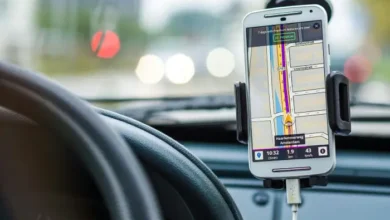Guide to Startup Your Own On-demand Bike Taxi App
Hey there! Kickstarting a business against all odds can be quite risky and exhausting. But you can beat all the odds with a well-devised plan. When you peek into the marketplace, one of the top trending businesses is taxi services.
If we further parse through we can find that the bike taxi services are more preferred among users. If you analyze the huge hype behind the bike taxi app, one thing is more clear. Users find it convenient to drive through the traffic when compared to taxi rides. Also, users find it more affordable than taxi services.
A study revealed that the hype for bike taxi services will keep growing and it is the absolute time for business owners to get their hands on bike taxi app development. In this blog we will figure out the benefits, the bike taxi app can bring into your business. Let us get started.
Stakeholders involved in the bike taxi business model
- Passenger
- Ride partner/Driver
- App owner
First, let us know the features that constitute the passenger app
Flexible ride bookings
The flexible booking feature allows the passenger to book his/her in advance. The objective is to allow the passenger to schedule the ride based on his/her convenience.
Estimated time of arrival
Once the passenger enters the location details, the app will generate the estimated time of arrival of the bike taxi. This is one of the premier features of the app.
Vehicle tracking
The passenger can have an eye on the location of the bike taxi via the app’s location tracking system.
Payment system
Infusing multiple payment methods will greatly benefit your business, as the passenger can opt-out for his/her convenient method of payment.
Ride history
The app has a database that stores the history of rides including distance traveled, the amount charged, ride date/time, name of the driver, etc.,
Real-time alerts
The app sends notifications to the passenger regarding the status of the ride. The notification can be related to the booking status, payment status, or any app-related info.
Reviews and ratings
The passenger can pen their ride experience in the reviews section. It is always better to know what app users think of your service so that you can analyze and improve if needed.
Next, we shall parse through the features contained in the driver app
Accept/Reject trips
The driver can make a flexible selection of rides according to his/her availability. The driver can accept or reject any ride requests with this technology.
Earning wallet
The driver can get a detailed earnings report under the earning wallet section. The driver’s earnings will be based on the number of rides completed.
Route map
The driver will get a route map from the app which will help the driver to navigate to the passenger’s location without any hassle.
An array of features that will be required by the admin to manage the app
Unified dashboard
As an admin, you can supervise all the activities of the user and the driver from the unified dashboard. Right from account management to feedback management you can handle everything from the single dashboard.
Assign rides
Whenever the user books a ride, the app will automatically assign it to the driver. In addition to this automated process, you can also manually assign rides to drivers.
Fleet management
As an admin, you can get real-time updates regarding the location of the passenger or the vehicle.
Data management
You can analyze the behavior of the passenger, their feedback, and enhance the functionality of the app.
The app has a relatively simple interface that allows the passenger to book the ride. Let us have a look at the steps that will need to be taken by the passenger to book rides.
Step 1
The passenger downloads the app and completes the registration.
Step 2
The admin will verify the details given by the passenger.
Step 3
The passenger will enter the ride details like source, destination and the app will generate the estimated time of arrival.
Step 4
Next, the passenger will enter the mode of payment. In the case of digital payment, he/she can use the type of payment from the available options.
Step 5
The driver will receive the ride request. If the driver accepts the ride, he/she will drive to the passenger’s location. Else, the driver can reject the request, which will be mapped to the other available driver.
Step 6
The driver will pick up the passenger and drop them at the destination.
Step 7
Once the passenger completes the ride, he/she can share their reviews in the app.
Conclusion
As we have reached the end of this blog, we hope that you will find this informatory for carrying out your bike taxi business. With no further delay, reach out to the bike taxi developer, state your requirements and launch the bike taxi app. Good luck!




